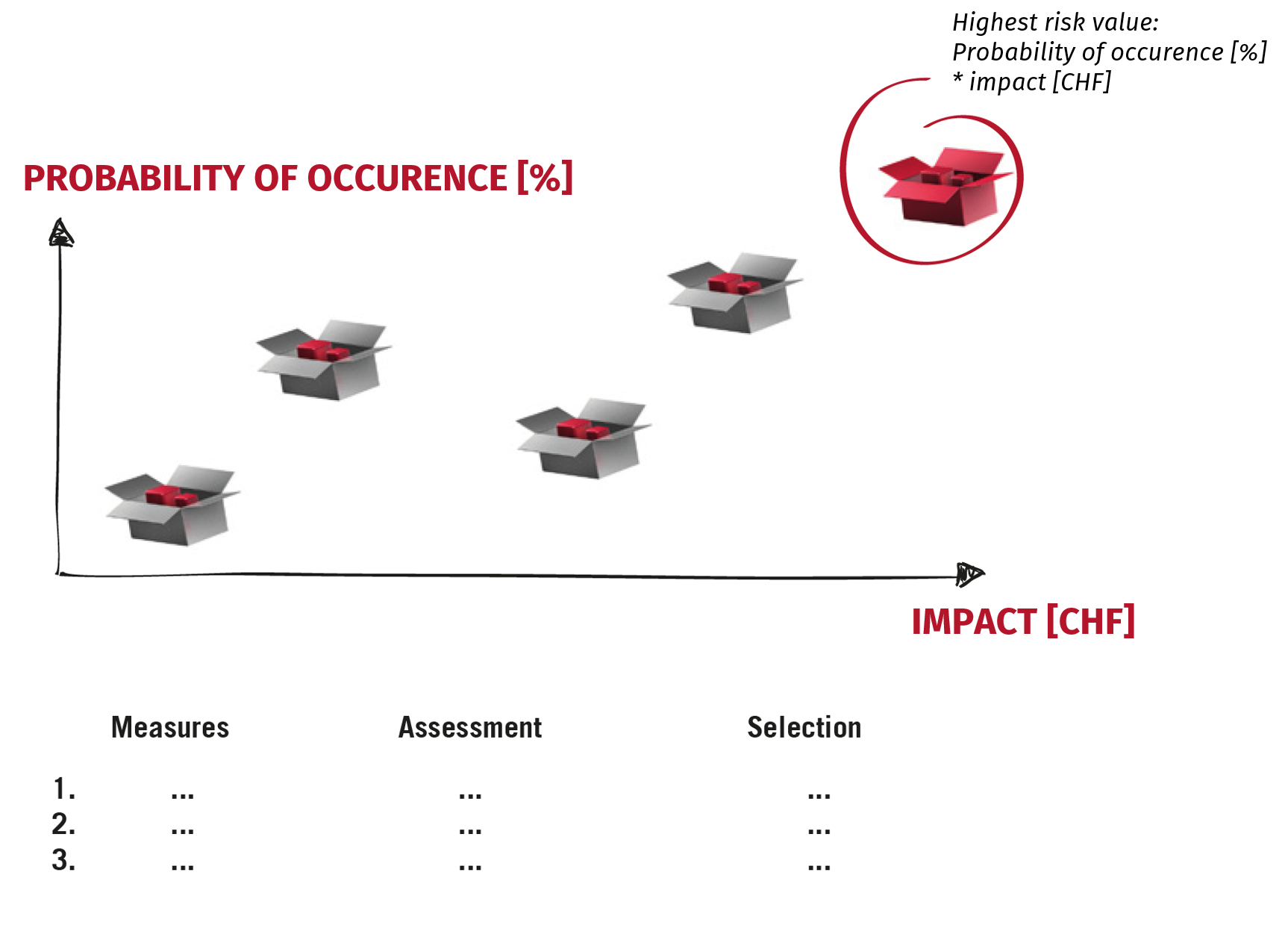RISK ANALYSIS¶
Projects always look to the future and are therefore subject to unforeseeable problems and risks. A precise risk analysis [17] is not possible, but it would be foolish not to carry it out. Therefore, the risks of the project should be analysed as a team and with the help of a workshop.
A risk analysis provides facts about the potential damage caused by individually identified risks and translates these into costs, i.e. the risks are assessed. Risk management is based on risk analysis and assessment and takes place in all phases of the project life cycle. It should always be carried out at phase transitions, after the critical review of the project. This also makes risk analysis a project management tool. This form of risk analysis requires a team that is equipped with expertise and knowledge of the project. For these reasons, it is advisable to conduct the risk workshop for the first time after the WBS has been created and the schedule has been planned.
Risk analysis workshop¶
Formal facts on the risk analysis for the project
Date of risk analysis, participants.
Workshop procedure
Identify the work packages which are exposed to risks (R-WP) in the work breakdown structure (WBS).
Individual work: 15 min
List the R-WPs with reasons.
Team work: 15 min
Estimate probability of occurrence [%] and impact [CHF] (= risk value).
Individual work: 5 min
Work out averages and prepare tables and charts.
Team work: 20 min
Define measures for the highest R-WP.
Individual work: 15 min
Evaluate measures and include them in the WBS.
Team work: 20 min
Post-workshop planning procedures¶
These results should be used to adjust the WBS, the WP, the process / schedule planning and the cost and resource planning. If many adjustments have been made, change management should be carried out.
Risks displayed in tabular form:

Risks displayed graphically:
